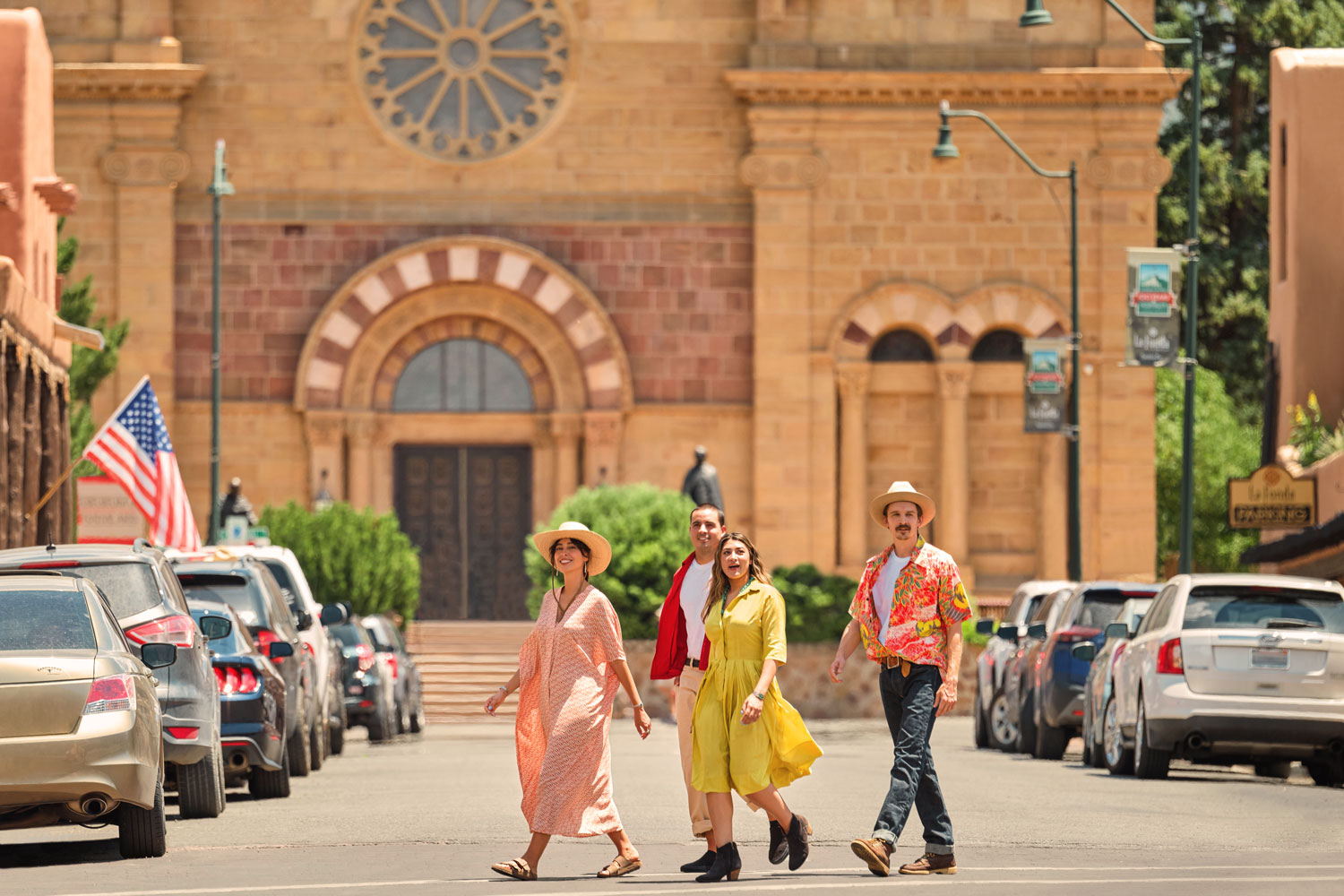Earth-toned adobes, hikes that lead to towering cliffs and former ancestral homes, an art scene that’s so vibrant it spills out of museums and into city-wide events and venues, cuisine that is an art form of its own… Chicagoans will experience a thrill when visiting Santa Fe, especially during summer months, when iconic offerings beckon, “Come Experience The City Different.”
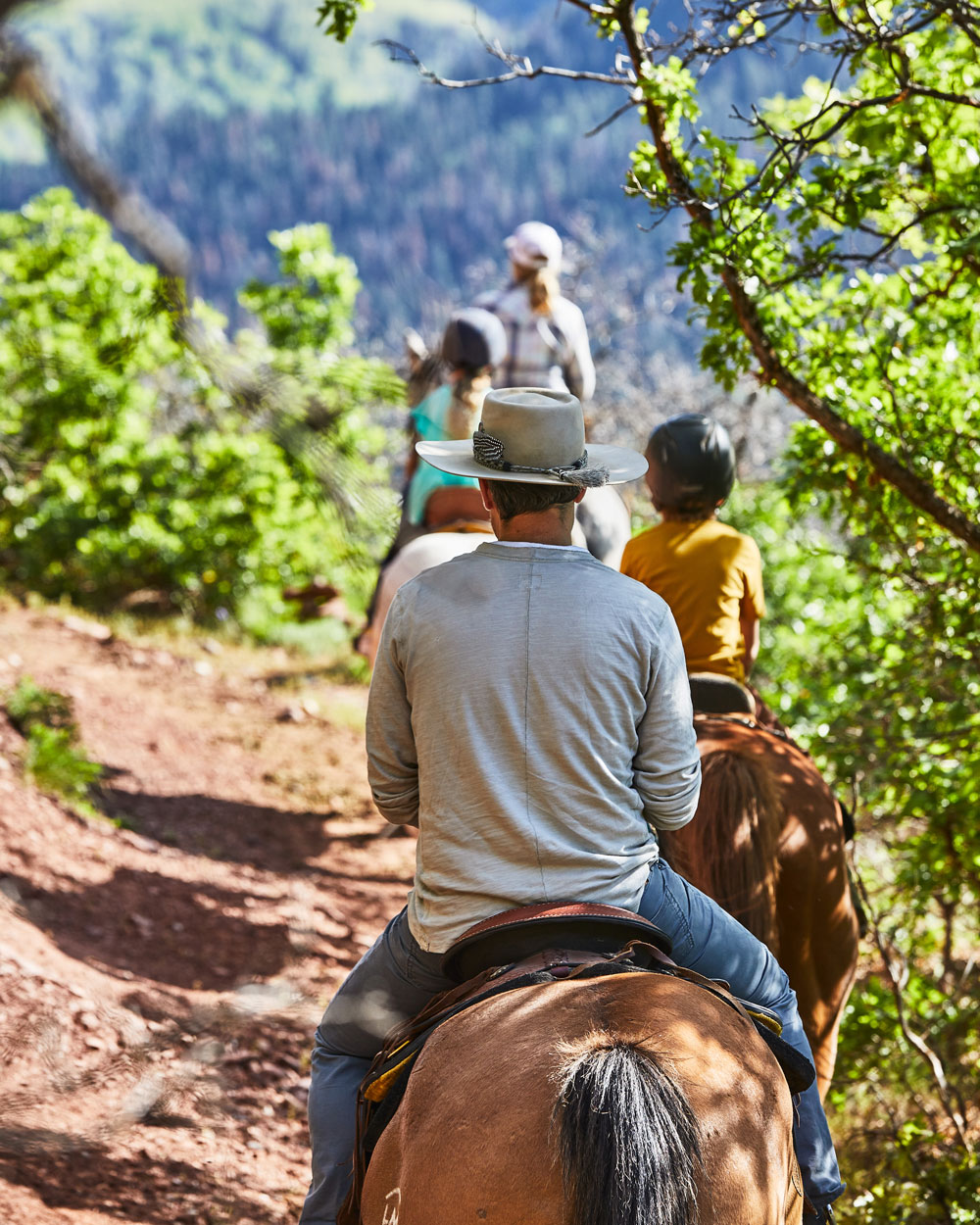
The Very Nature of Santa Fe
Combining feelings of Zen and adventure are guided horseback rides through Bishops Lodge. Trails throughout the 314-acre ranch delight with views of the Sangre de Cristo Mountains’ jagged peaks and expansive vistas of Santa Fe National Forest.
Taking in the wilderness of Santa Fe brings on a desire to get closer to nature. There are myriad opportunities for doing just that. Leaving a lasting impression: the cliffs, canyons and mesas of the 33,000-acre Bandelier National Monument. These ancestral lands of 23 tribal nations speak to an 11,000-year history through caves, ruins and petroglyphs.
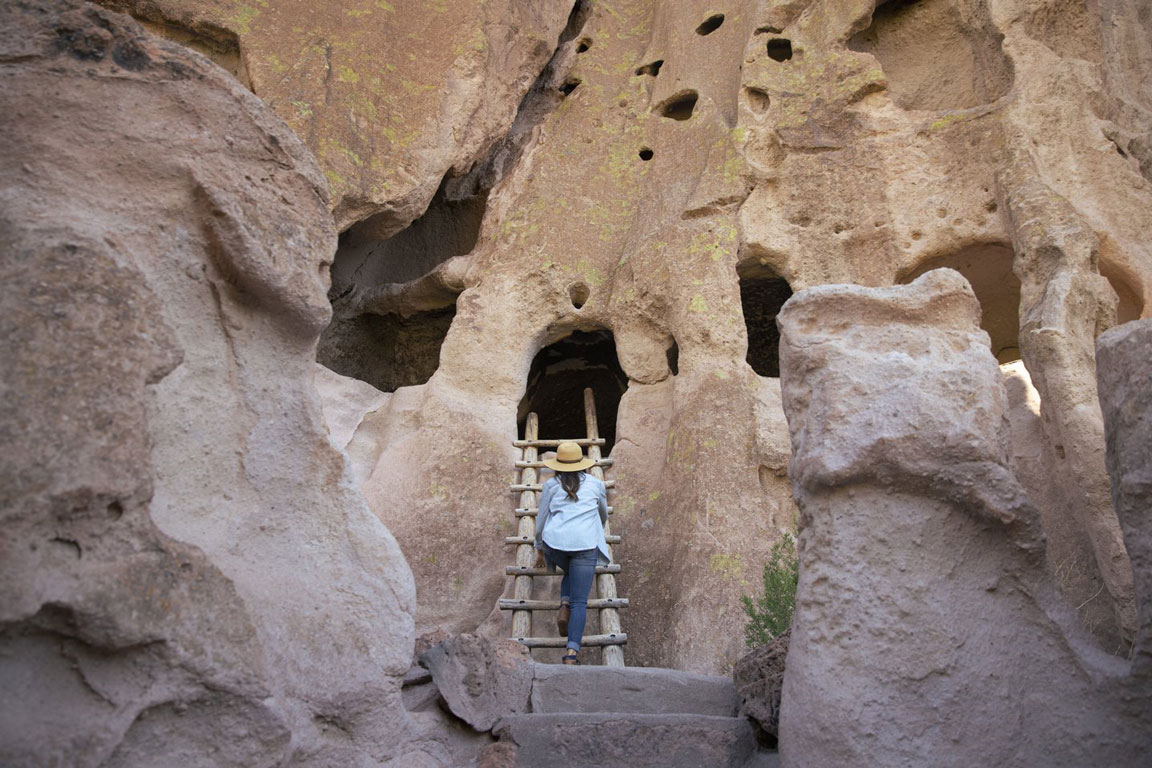
Immerse in Bandelier’s past by traversing its trails to happen upon archeological sites, such as cavates, ancestral Pueblo cliff dwellings with ladders that welcome exploring, among them, Alcove House. Also to discover is Big Kiva, where communal gatherings occurred, walls of the once 400-room food storage site of Tyuonyi, Talus House, which was rebuilt in 1920, and Long House, where petroglyphs reveal ancient stories.
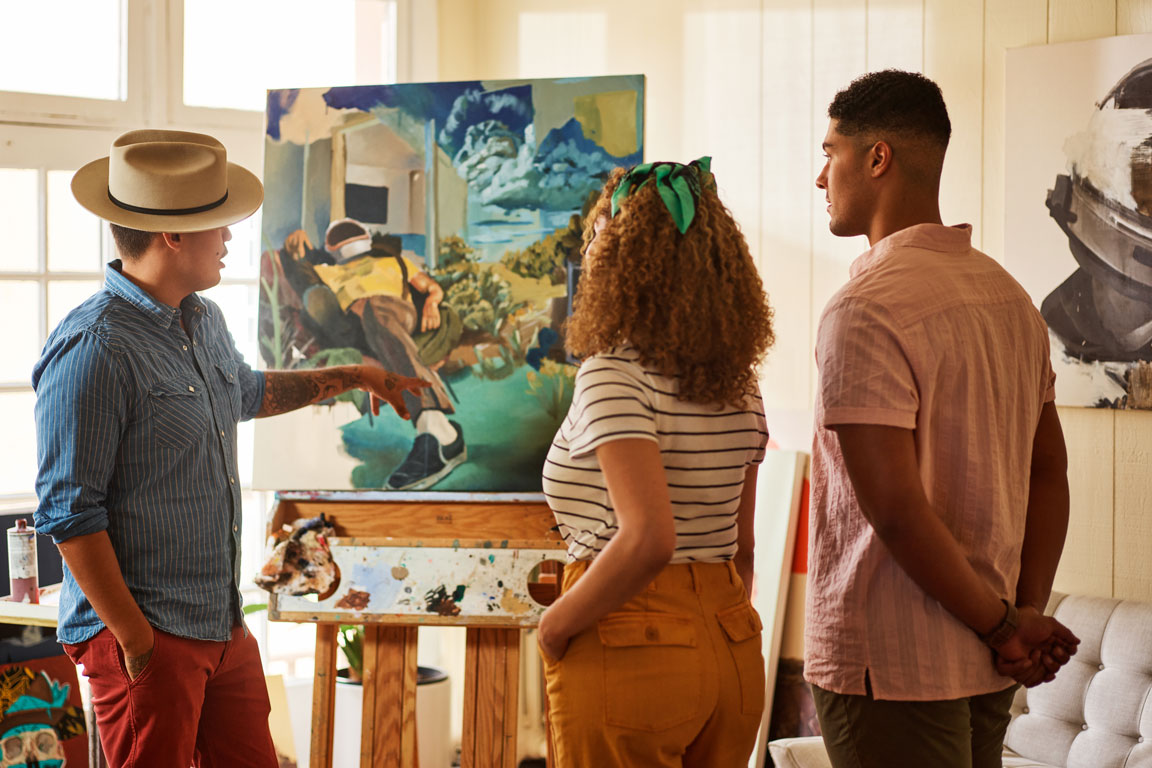
A Brilliant Dose of Culture
There’s still much of Santa Fe’s history and culture to be encountered. An ideal place to do so is Museum Hill, home to Santa Fe Botanical Garden and four museums. Luring right away are three gardens: the Piñon-Juniper Woodland with its native plants, Orchard Gardens’ perennials, and Ojos y Manos, an ethnobotanical garden with sculptures, art and a mosaic mural tucked amongst the plant life.
Step inside Nuevo Mexicano Heritage Arts Museum (NMHAM), an architectural legacy of Santa Fe. The 1930 Pueblo-Spanish Revival residence was once the home of renowned architect John Gaw Meem. Currently on display is “100 Years of Collecting|100 Years of Connecting,” an exhibit honoring the museum’s centennial celebration by sharing personal stories behind the traditional art forms–from santos and straw appliques to textiles and silverwork–collected over NMHAM’s lifetime. A plus–admission is free throughout 2025 in honor of the centennial celebration.
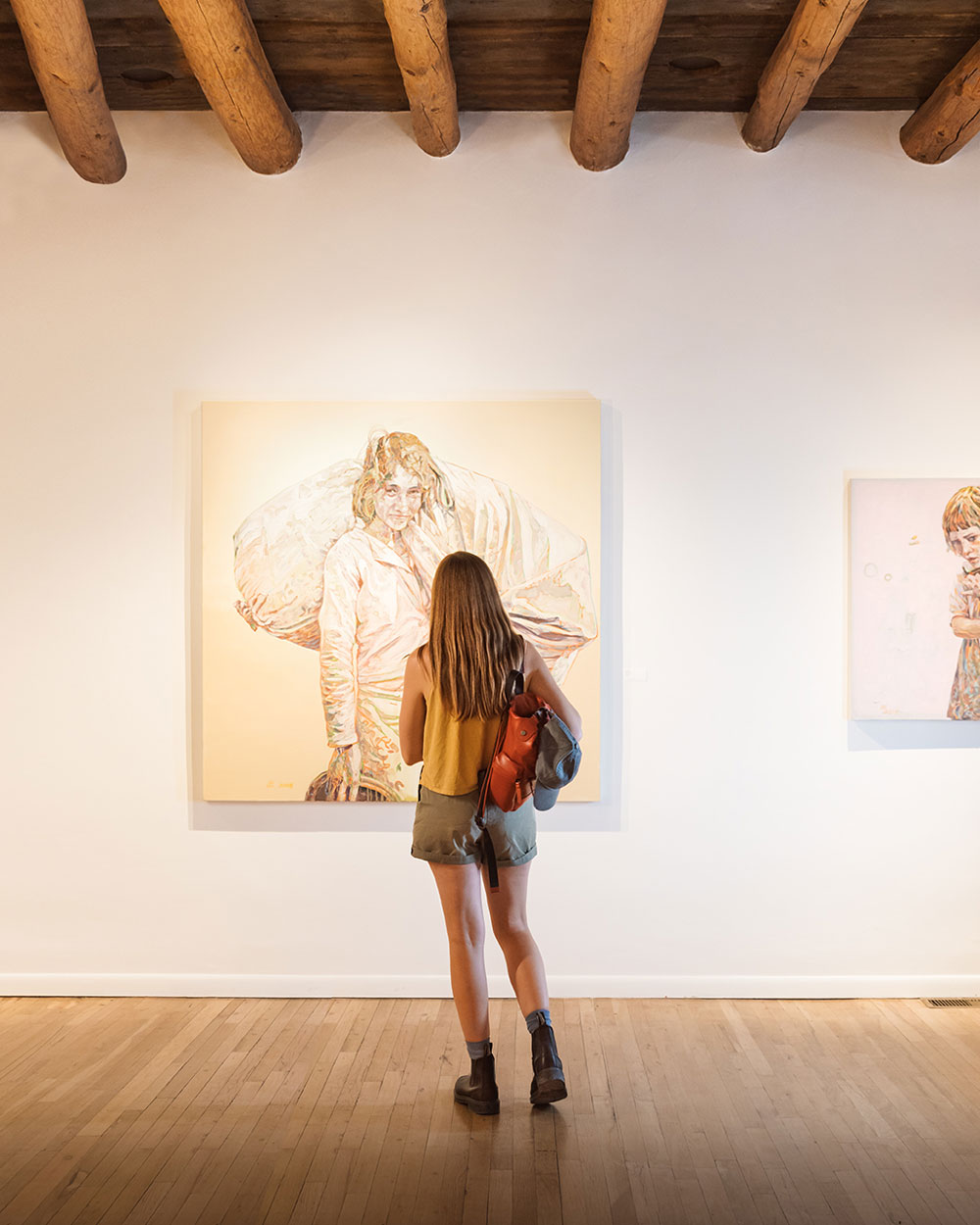
At the Museum of Indian Arts & Culture, take in historical and contemporary art from the people of the Southwest. On display now is “Makowa: The Worlds Above Us,” which gives insight into Indigenous relationships with the sky through both culture and science. A popular draw at the Wheelwright Museum of the American Indian is the Jim and Lauris Phillips Center for the Study of Southwestern Jewelry exhibition focusing on Navajo and Pueblo jewelry’s symbolic,political, communal and innovative impact throughout time. Upcoming in their Schultz Gallery, June 7, 2025-March 28, 2026, is “Visualizing K’é: New Works by Marwin Begaye,” 15 drawings and prints that visualize the Diné philosophy and practice of maintaining ancestral knowledge, cultural practices and kinship (k’é).
Still to see is “Appearances Deceive: Embroideries by Policarpio Valencia”at the Museum of International Folk Art. Opening on June 8 and running through March 30, 2026, this retrospective of Nuevomexicano artist Policarpio Valencia’s embroidered textiles contemplates morality and mortality is whimsical and engaging.
The Georgia O’Keeffe Museum is a “must-visit” Santa Fe attraction. Here, it’s easy to see how O’Keeffe and her art became so equated with Santa Fe. Through March 1, 2026, the exhibition “A Circle that Nothing Can Break”looks at the appearance of circles and spirals in the artist’s works and what they signify.

Catching Iconic Santa Fe Events
Time a Santa Fe getaway just right, and it’s possible to experience some of the town’s most lauded annual events. Among them, the highly extolled Santa Fe Farmers’ Market takes place year-round on Saturdays from 8 a.m. to 1 p.m. and on Tuesdays, May 6 through December 23, 8 a.m. to 1 p.m. Meet local farmers and purchase some fresh from the field produce at the Santa Fe Farmers’ Market Pavilion at the Santa Fe Railyard.
The Santa Fe Summer Scene series runs May 31 through August 28. Over 50 free concerts and seven movies are held at various locations, including Santa Fe Plaza, Santa Fe Railyard, Santa Fe Railyard Park, Reunity Resources Park and SWAN Park.
The 21st Annual International Folk Art Market, the world’s largest market of its kind, kicks off July 10-13 at Santa Fe Railyard Park. This is an excellent opportunity to meet artisans from around the globe who are ensuring folk and heritage art continues to thrive.
Colcha embroidery, gesso reliefs, bultos en nicho, weavings, woodcarvings and retablos are just a few of the artistic mediums featured at the 101-year running Traditional Spanish Market. This outpouring of traditional Hispanic art, music and culture that has heavily influenced the region takes place July 26-27 on Santa Fe Plaza.
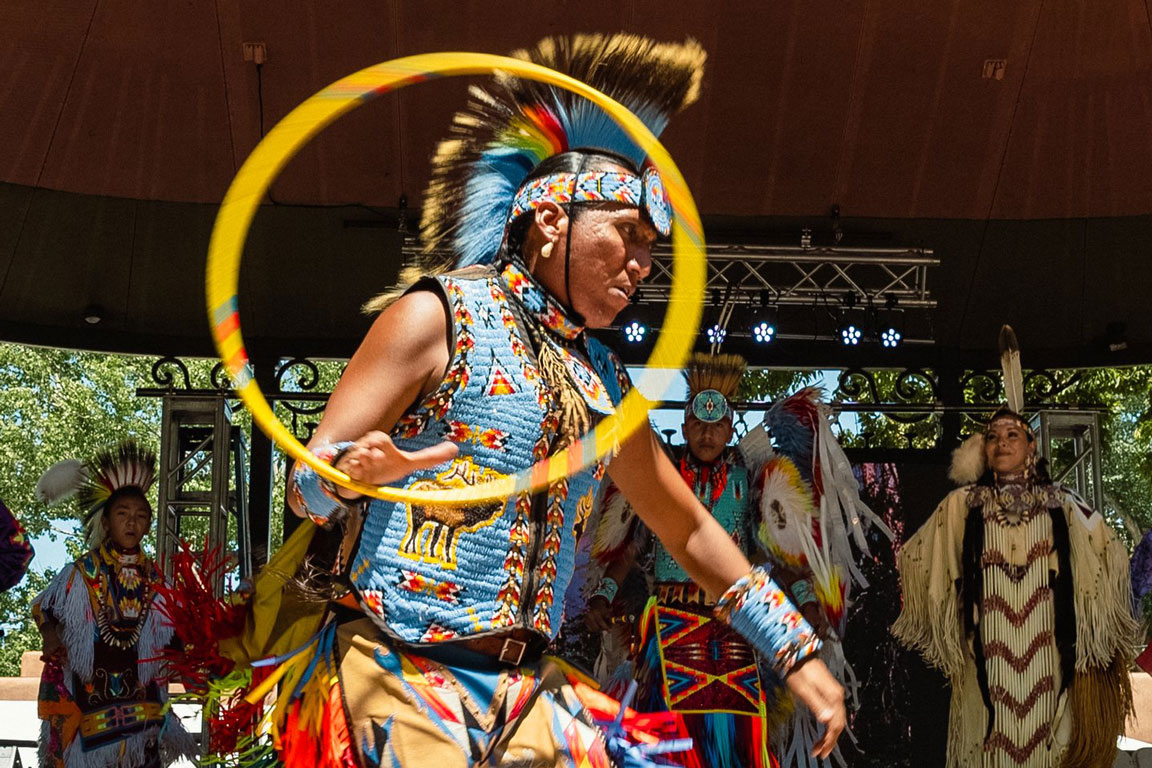
Coming up August 16-17 is the eagerly anticipated Santa Fe Indian Market. Going strong for 103 years, the market, which is hosted by the Southwestern Association for Indian Arts (SWAIA), is the largest juried Native art show in the world. This free celebration (some events are ticketed) of Native art, heritage and cultural offerings from 200 Nations in the U.S. and Canada takes place on Santa Fe Plaza.
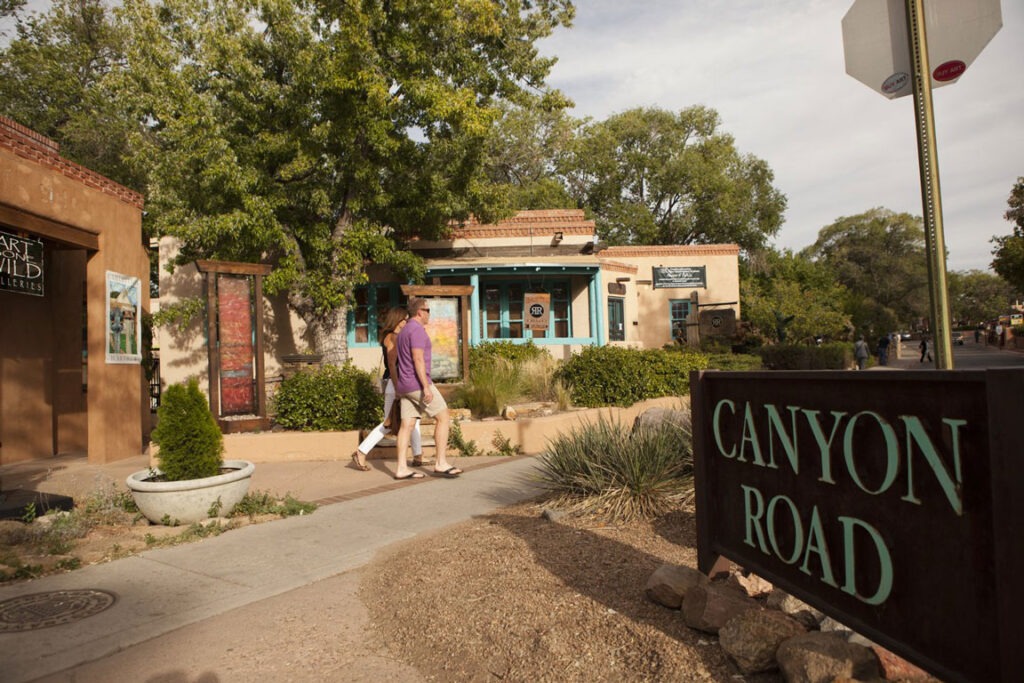
Distinctively Santa Fe Shopping
As Santa Fe shopping goes, Canyon Road tops the list. Along this half-mile stretch in Santa Fe’s Historic District are over 100 galleries displaying styles ranging from traditional to abstract, expressionistic to contemporary and more. Attending the weekly Friday night Canyon Road Art Stroll (5 p.m.-7p.m.) is highly recommended when a sense of revelry is added to the mix. Another opportunity to embrace Canyon Road’s art is through the Canyon Road Summer Walk series, which occurs on the first Wednesdays– June 4, July 2, August 6, September 3 and Halloween–from 5 p.m.-8 p.m. Music, food trucks and galleries staying open late promise a festive night out.
Make sure to stop in Homefrocks to see their fashion collection the designs and hues of which were inspired by New Mexico’s “canyons, valleys, & desert,” key into Santa Fe’s mystical side with a stop at Luna Mistica Apothecary, and soak in the colors found at Leslie Flynt through its artisanal home and kitchen décor, furniture, textiles and one-of-a-kind clothing.
A bit of heaven near Santa Fe Plaza: Collected Works Bookstore & Coffeehouse. Hours can be spent perusing the 46-year-old independent bookshop’s shelves and savoring a cup of Joe.
Santa Fe Railyard describes itself as an “epicenter for diverse local markets, live entertainment, gallery openings, artist talks and free community events.” They left out one of its most essential elements: fun. The 50-acre space extends down Guadalupe Street, Cerrillos Road and Baca Street and includes retail shops, restaurants, bars, breweries, a 12-screen movie theatre, a park, plaza and a pedestrian promenade. Shoppers aren’t the only ones getting into the mix. The Acequia Trail Easement calls to hikers and cyclists to embrace a landscape lush with elm trees and the sounds of Acequia Madre, otherwise known as “Mother Ditch,” bringing water to Santa Fe via the Sangre de Cristo Mountains.
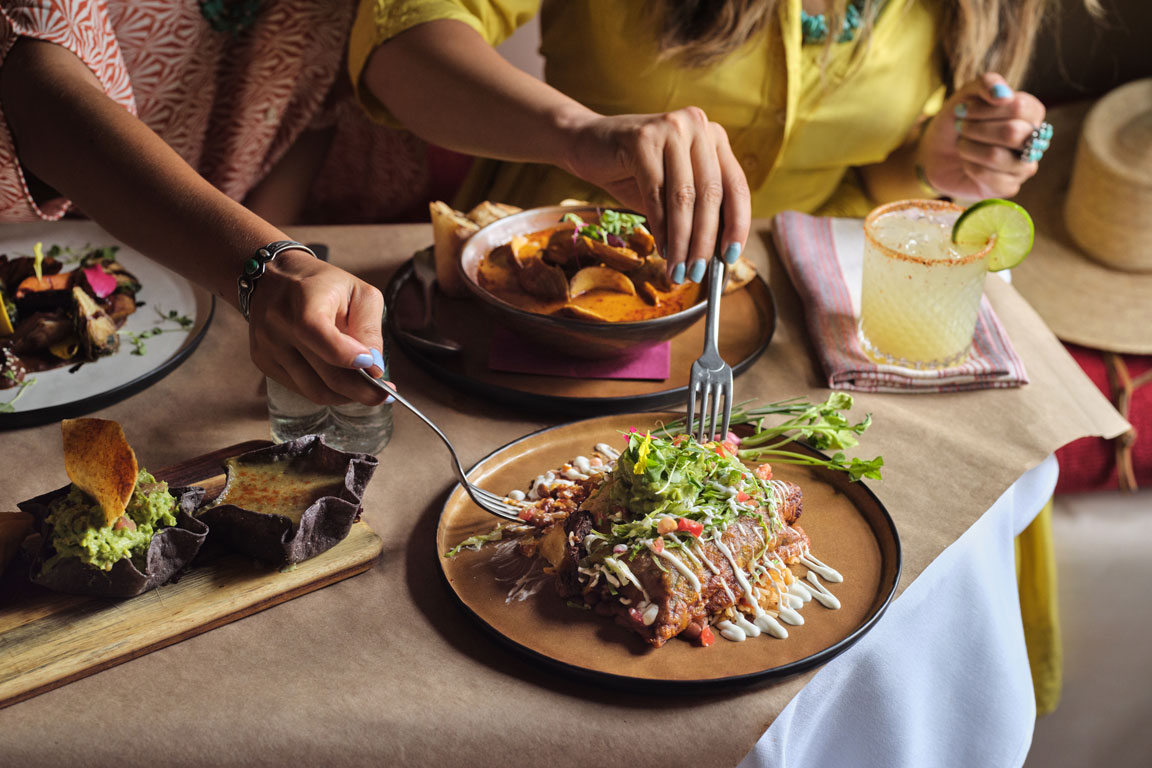
Classic Flavors of Santa Fe
Touted as Santa Fe’s oldest restaurant, The Plaza Café is a 120-year-old diner specializing in New Mexico dishes like Upside Down Santa Fe Frito Pie and Stuffed Sopapilla. For 72 years, The Shed has been earning fans for its Pollo Adobe and Green Chile Burrito. Another fixture in the town for the past 50 years is Tia Sophia’s, known for its Southwestern red and green chile sauces that add extra special love to enchiladas, chile rellenos and tamales.
Transcending mere dining is a meal at Café Pasqual’s. This 46-year institution is located in a historic adobe a block from Santa Fe Plaza. On the menu are flavors of Old Mexico, New Mexico, “down-home recipes,” and modern twists on traditional favorites. There’s also a gallery of works from local artisans, including a cookware collection made from indigenous micaceous clay. Though they serve breakfast, lunch, and dinner, people clamor for their coffee and breakfast dishes like the Griddles Polenta & Chorizo with green chile-flecked Anson Mills polenta, mascarpone cheese, roasted corn, red chile sauce and two eggs.
Coyote Cafe has drawn crowds for 38 years for its take on New Mexico Cuisine. A great example: the Porcini Sage Ravioli with truffled cream sauce, Oaxaca cheese, green chile mushroom duxelles and shaved Ibarra chocolate. Head upstairs to the rooftop cantina (the views are terrific) for selections like Carna Asada Tacos paired with a Salty Senorita margarita.

Yet to be encountered is Mexican-inspired cuisine, vibe, and folk art at Paloma, where menu items like the Chicken En Mole Negro will spur future cravings. At Sazon, James Beard Award-winning Chef Fernando Olea tantalizes with Old Mexico flavors with offerings like Cholulua, his take on Chile en Nogada with chile poblano, ground lamb, pork and beef, nuts, dried fruits and spices over a walnut sauce with pomegranate seeds and balsamic jalapeno reduction.
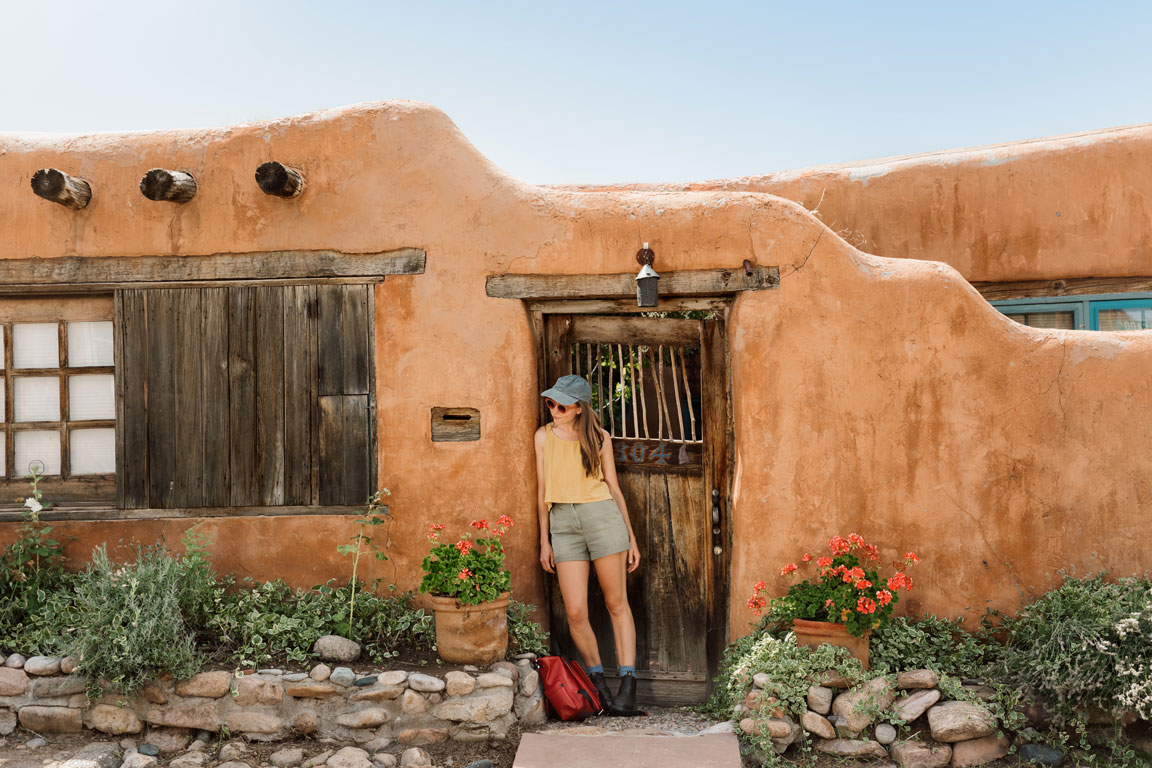
Reveling in the City Different
After taking in the very essence of Santa Fe, time for reflection is due. Embark on a visit to one of the city’s beloved institutions, Ten Thousand Waves. What began as a spa in 1981 has grown to include food and lodging. Book time in New Kojira, a private hot tub, sauna and cold plunge that was once the site of the communal women’s hot tub.
Here, views of the city will tug on the heart, making it bittersweet to bid Santa Fe goodbye. No need to be sad. The city awaits for return visits with “de brazos abiertos,” open arms.



